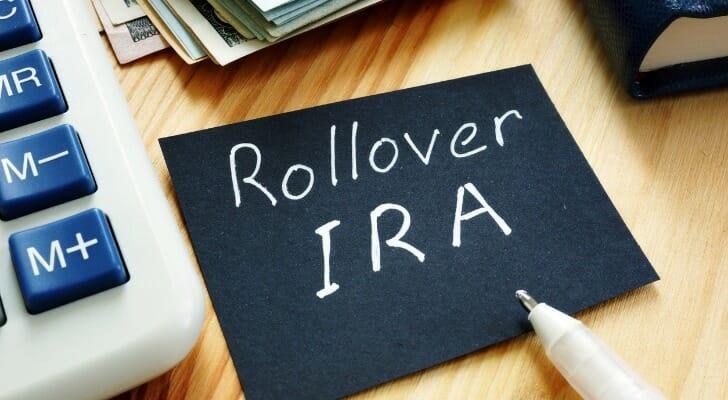
If you have more than one retirement account, it’s possible to extend a short-term loan to yourself when you need cash in an emergency. This involves initiating an indirect rollover from one retirement account to another. But there’s just one catch: the 60-day rollover rule requires you to deposit the money within a certain window to avoid a tax penalty. If you’re considering taking money from an individual retirement account (IRA) temporarily, it’s important to understand what the 60-day rollover rules mean and how they’re applied. Before attempting a 60-day rollover, check with a financial advisor to make sure you meet all the criteria of this tactic.
Retirement Account Rollovers Explained
To understand the 60-day rollover rule, it’s important to understand how IRA and 401(k) plan rollovers work in general. There are two types of retirement plan rollovers: direct and indirect.
With a direct rollover, the company that owns your first retirement account transfers money directly to your new retirement account on your behalf. You don’t receive any money yourself; everything is done electronically and you have just to fill out the appropriate paperwork. When you’re moving money between IRAs, this can be referred to as a trustee-to-trustee transfer.
The advantage of a direct rollover is that you can avoid potential tax penalties. Since the funds are being sent directly from Account A to Account B, it’s not considered a distribution. So you wouldn’t owe any income tax on the money or any early withdrawal penalties if you’re under age 59.5.
An indirect rollover, on the other hand, works differently. In this scenario, you ask the company that holds your first retirement account to cut you a check for the money you want to distribute. It’s then left up to you to deposit that money into your new retirement account.
Sounds simple enough, but if you don’t deposit the money in a timely manner, the entire amount can be treated as a taxable distribution. Not only that, but you may also have to pay a 10% early withdrawal penalty if you’re under age 59.5. That’s because of the IRS 60-day rollover rule.
60-Day Rollover Rules Explained
The IRS is strict about the tax treatment of IRA distributions, and the agency works hard to ensure people don’t try to create loopholes for themselves to avoid taxation. The 60-day rollover rule allows you a 60-day window in which to deposit IRA rollover funds from one account to another if you choose an indirect rollover option. If you don’t meet this deadline following an indirect rollover, then taxes and penalties can apply.
The 60-day rollover rules essentially keep people from taking money out of their retirement accounts tax-free. If you redeposit the money within the 60-day window, then you don’t have to worry about taxes. It’s only if you don’t deposit the money into another retirement account.
Aside from that, there’s another guideline to know about the 60-day rollover rule. The IRS only allows one rollover from an IRA to another IRA (or the same IRA) in any 12-month period, regardless of how many IRAs you own. This means if you have a SEP IRA, SIMPLE IRA, traditional IRA and Roth IRA, they’re all treated the same for rollover purposes under the 60-day rule.
There are a couple of exceptions, however. Trustee-to-trustee transfers between IRAs aren’t subject to the once-per-year limit. And any rollover conversions from traditional IRAs to Roth IRAs aren’t counted toward the limit either.
Also, the IRS may waive the 60-day rollover requirement in certain situations if you missed the deadline because of circumstances beyond your control. There are three ways to obtain a waiver of the 60-day rollover requirement:
-
You qualify for an automatic waiver
-
You request and receive a private letter ruling granting a waiver
-
You self-certified that you met the requirements of a waiver and the IRS determines during an audit of your income tax return that you qualify for a waiver
Using the 60-Day Rollover Rule for a Short-Term Loan
Technically, it’s possible to withdraw money from an IRA through an indirect rollover and use it as a short-term loan. The advantage of doing so is that you’re using your own money so there’s no interest to pay to a lender. And there’s no credit check involved either, which can make those funds easier to access if you need cash in a hurry. As long as you pay the money back within the 60-day rollover window you won’t get stuck with tax penalties.
But there are some conditions to keep in mind. First, your IRA custodian can withhold 20% of the money you want to distribute for taxes. So if you want to take $20,000 from your IRA, $4,000 of it would be withheld for taxes. You’d have two options:
-
Roll over the $16,000 and report it as nontaxable, while reporting $4,000 as taxable income and $4,000 as taxes paid
-
Roll over the full $20,000, reporting $16,000 as a nontaxable rollover and $4,000 as taxes paid
With the first option, you could end up having to pay the 10% early withdrawal penalty if you’re under age 59.5. With the second option, you can avoid paying taxes and penalties but only if you make up the amount withheld in taxes.
So again, say you want to withdraw $20,000 but your IRA custodian withholds $4,000 for taxes. To avoid taxes of any kind, you’d have to redeposit the entire $20,000, making up the $4,000 that was withheld with other funds. And again, you’d have to do all of this within the 60-day rollover time frame. Otherwise, the entire amount is treated as a taxable distribution.
60-Day Rollover Rule Alternatives
While the 60-day rollover rule can offer some flexibility in accessing your retirement funds, consider the potential tax consequences involved if you can’t redeposit the money on time. Taking a loan from your 401(k) may be something to consider if you need a larger amount of money and more time to pay it back. You may pay interest on a 401(k) loan but again, you’re paying the money back to yourself.
That strategy has its own downsides, however. If you leave your employer then the entire loan amount may become payable immediately. And if you don’t pay up, the full loan amount can be reported to the IRS as a taxable distribution.
Personal loans, home equity loans or even credit cards may be worth considering in lieu of tapping into retirement savings when you need money on short notice. You’re creating debt but you’re not running the risk of negative tax consequences and more importantly, you’re not draining your retirement accounts.
The Bottom Line
The IRS 60-day rule for IRA rollovers can give you some leeway when taking an indirect rollover from a retirement account. But it’s important to understand how the rule works and avoid mistakes and also why timing matters if you’re considering using a short-term rollover for a loan. The IRS does permit exceptions in certain situations if you missed the deadline because of circumstances beyond your control. Just be sure to pursue such exceptions as the IRS mandates.
Tips for Retirement Planning
-
Consider talking to a financial advisor about the pros and cons of 60-day rollovers and whether it’s a strategy you should use if you need money in the near term. If you don’t have a financial advisor yet, SmartAsset’s financial advisor matching tool can help. You can get personalized advisor recommendations online and it only takes a few minutes. If you’re ready, get started now.
-
Use SmartAsset’s tax return calculator to see how your income, withholdings, deductions and credits impact your tax refund or balance due amount.
Photo credit: ©iStock.com/standret, ©iStock.com/Andrii Dodonov, ©iStock.com/izusek
The post Retirement Plans: 60-Day Rollover Rules appeared first on SmartAsset Blog.


